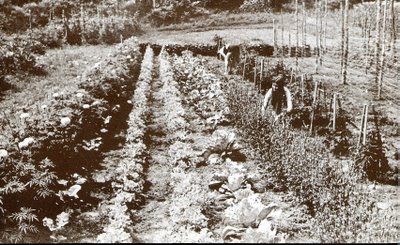The Americas before Columbus: more populous and more livable than Europe?
 Amazonian Indians literally created the ground beneath their feet. This is one of many interesting and controversial insights/speculations found in 1491: New Revelations of the Americas Before Columbus by Charles C. Mann (Knopf).
Amazonian Indians literally created the ground beneath their feet. This is one of many interesting and controversial insights/speculations found in 1491: New Revelations of the Americas Before Columbus by Charles C. Mann (Knopf).Here are a few others :
- In 1491 there were probably more people living in the Americans than in Europe.
- Certain cities -- such as Tenochtitlan, the Aztec capital -- were far greater in population than any contemporary European city. Furthermore, Tenochtitlan, unlike any capital in Europe at that time, had running water, beautiful botanical gardens, and immaculately clean streets.
- Pre-Columbian Indians in Mexico developed corn by a breeding process so sophisticated that the journal Science recently described it as "man's first, and perhaps the greatest, feat of genetic engineering."
- Amazonian Indians learned how to farm the rain forest without destroying it -- a process scientists are studying today in the hope of regaining this lost knowledge.
- Native Americans transformed their land so completely that Europeans arrived in a hemisphere already massively "landscaped" by human beings. The rain forest itself may be largely a human artifact.
Closer to home: The New Alchemy Institute
 In 1971 John Todd, Nancy Jack Todd and Bill McLarney founded the New Alchemy Institute on Cape Cod in Hatchville, Massachusetts. Their goal: to develop environmentally sound approaches to meeting the basic human needs of food, energy and shelter. They were among the original ecological visionaries.
In 1971 John Todd, Nancy Jack Todd and Bill McLarney founded the New Alchemy Institute on Cape Cod in Hatchville, Massachusetts. Their goal: to develop environmentally sound approaches to meeting the basic human needs of food, energy and shelter. They were among the original ecological visionaries.Raised-bed organic agricultural practices were applied to the sandy, nutrient-deficient soils of an abandoned Cape dairy farm that became home to a funky and sophisticated appropriate technology incubator. Before long, New Alchemy farmers were able to grow enough food on one-tenth of an acre to provide thirteen people with three vegetable portions a day for a year (canning and freezing required, of course). This without the use of any chemical fertilizers, pesticides or herbicides.
Read about the history of New Alchemy and the origins of ecological design in A Safe and Sustainable World by Nancy Jack Todd (Island Press).
Food for thought. (GW)
Illustration (Thanks, HMS): To produce enough food to support their population, the Aztec constructed chinampas, or raised garden beds, in swampland and shallow water. The Aztec capital of Tenochtitlán was built on an island in the middle of Lake Texcoco (which later dried up and is now the site of Mexico City), limiting the amount of available dry farmland.

0 Comments:
Post a Comment
<< Home